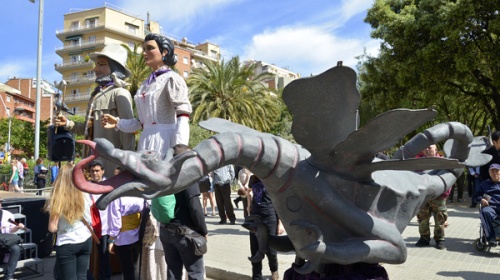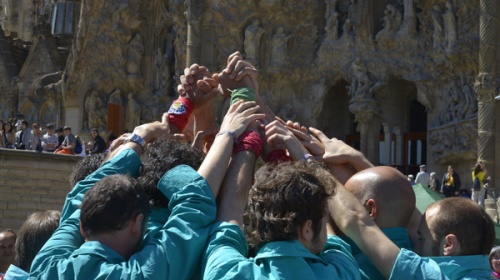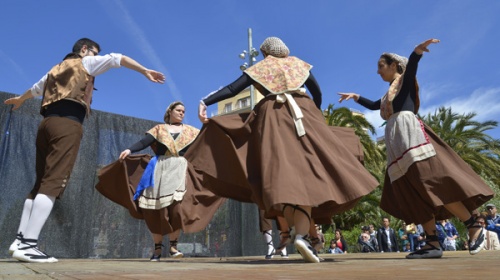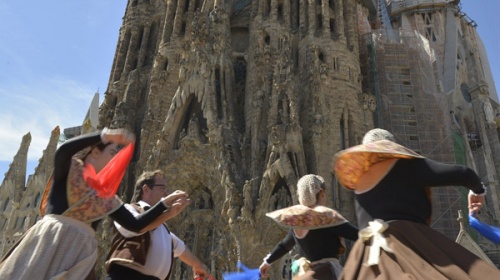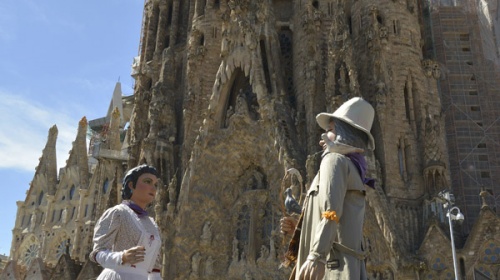Festa Major de la Sagrada Família
Activity dates
Dates de celebració
Mid-April, in the Eixample district's Sagrada Família neighbourhood
Feast Day: 23 April, Sant Jordi
The current Sagrada Família neighbourhood used to be called El Poblet and was part of a little group of houses in the country. Then the factory workers' houses arrived at the end of the 19th century, as a result of the industrial revolution, and the area started to grow. This was also the time when work started on building a key and distinctive feature of the neighbourhood, the Sagrada Família temple.
And it is precisely the Sagrada Família that provides the backdrop for most of the festa major, which is held round the Dia de Sant Jordi (St George's Day). For two weeks a host of activities are organised to liven up the neighbourhood and the people who live in it. Popular culture, which is well represented there, plays a very important role in the festival with dance, a cercavila gegantera, tarda de foc and a jornada castellera.
Reason
Sagrada Família's festa major is held round 23 April, St George's Day in Catalonia. Now this is a day with very strong roots that is celebrated all over the country but the saint has been worshipped since the Middle Ages.




